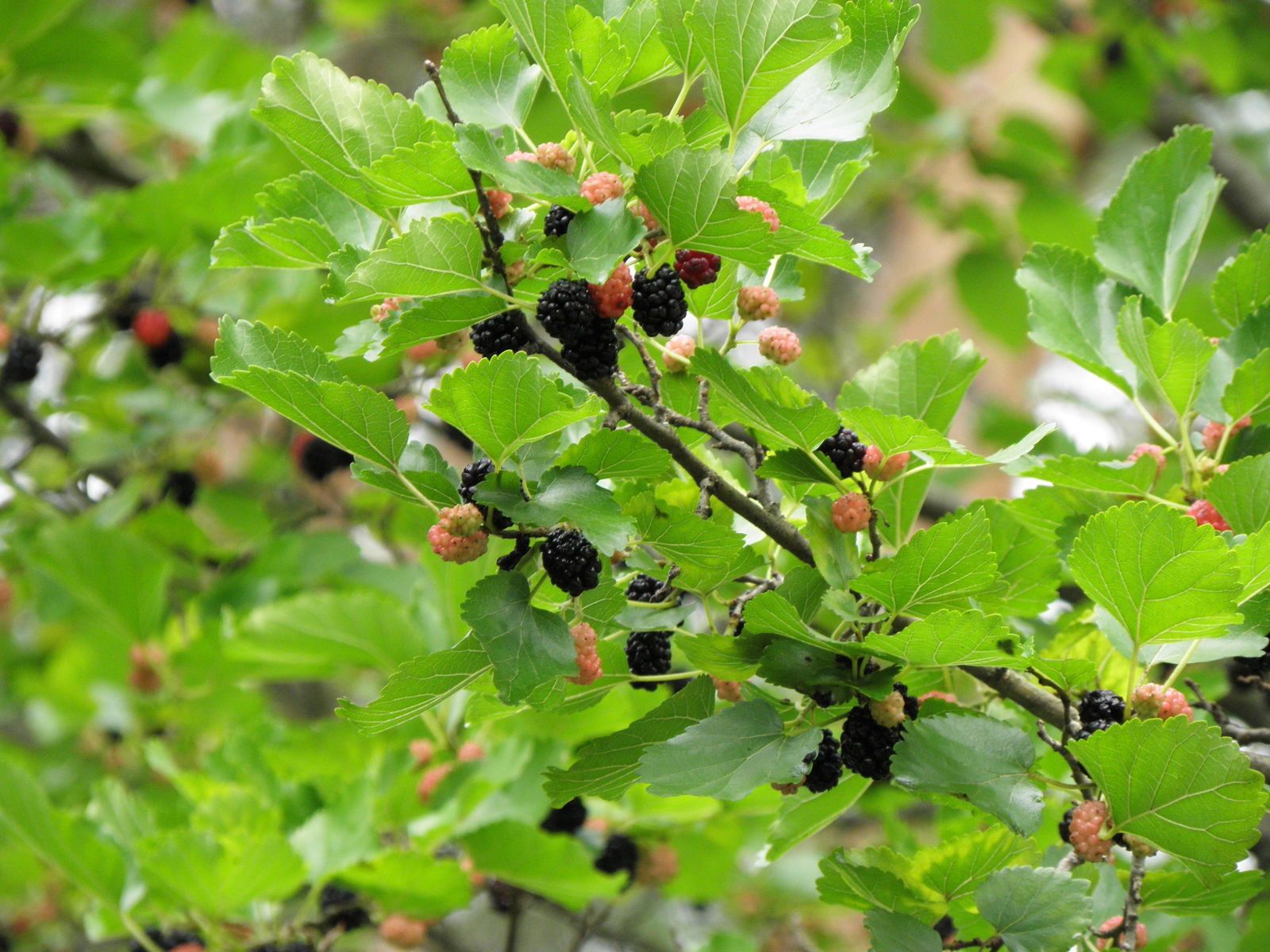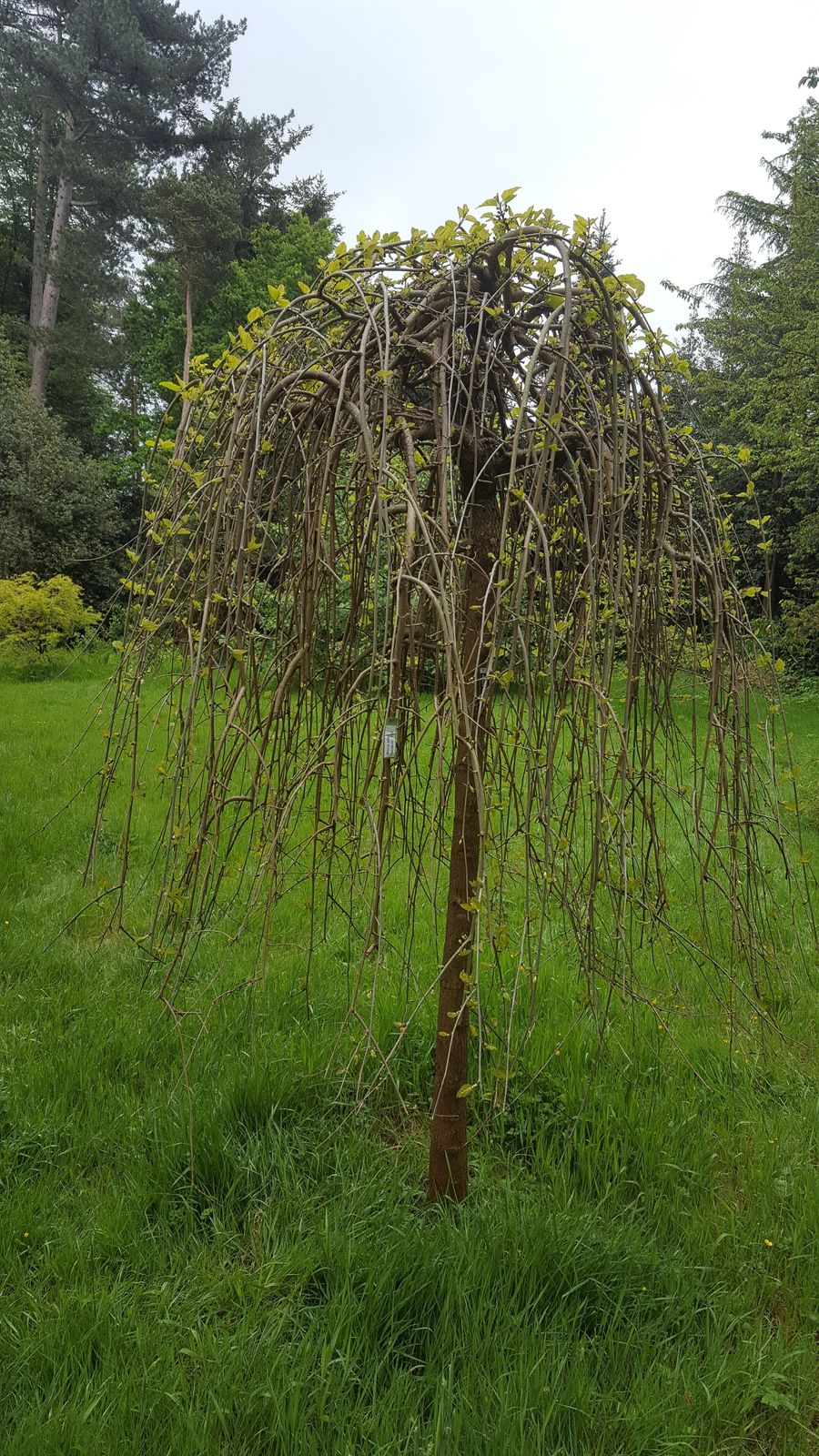White Mulberry
morus alba
Also known as: ["Silk Mulberry","Common Mulberry"]
Overview
A deciduous tree native to China, known for its sweet, edible fruits and leaves used to feed silkworms.
Benefits & Perks
["edible fruits","wildlife attractant (bees, butterflies, birds)","fast growing"]
Botanical Classification
| Phylum: | Magnoliophyta |
| Class: | Magnoliopsida |
| Order: | Rosales |
| Family: | Moraceae |
| Genus: | Morus |
| Botanical Name: | Morus alba |
Plant Characteristics
Basic Information
- Category: Trees
- Suitable Location: outdoor garden in temperate climates, adaptable to various settings
- Suitable For:
- Is Weed: No
- Allergenicity: low
Environmental Needs
- Climate: {"temperatureRange":"–30–40°C"}
- Hardiness: {"zones":"3–9"}
- Misting: rarely required, only if ambient humidity is very low
- Drainage: Fast-draining to prevent waterlogging.
- Soil Type: Well-draining loamy soil with organic matter.
Maintenance Level
- Maintenance Level: moderate
- Toughness Level: moderate
- Pruning Frequency: Annually in late winter or early spring before new growth.
- Pruning Intensity: Moderate to heavy, depending on desired size and shape.
Care Details
Ideal Sunlight Coverage:
Full sun (6–8 hours/day) in spring and summer; partial shade in hot climates or during peak summer.
Sunlight Tolerance Tips:
Acclimate new plants gradually to full sun; protect from intense midday sun to avoid scorching; adjust placement based on seasonal light intensity.
Care Requirements
Care Difficulty
easymoderate
Sunlight
full sun to partial shade
Rotate plant for even growth; use shade cloth in extreme heat; monitor for sunburn signs.
Watering
every 7–10 days during growing season, less frequently in winter
Water thoroughly until runoff; allow soil to dry between waterings; avoid overhead watering to prevent fungal issues.
Soil
well-drained, loamy soil with moderate fertility
pH: Slightly acidic to neutral (6.0–7.0).
Ensure good drainage; amend with organic matter; test pH periodically.
Temperature
Prefers 60–85°F (15–29°C); tolerates mild frosts but thrives in warm, temperate conditions.
Protect from frost; water early to avoid heat stress; adjust care for seasonal shifts.
Fertilizing
every 4–6 weeks during spring and summer, none in fall and winter
Fertilize in spring before new growth; avoid over-fertilizing to prevent root burn; flush soil occasionally to prevent salt buildup.
Propagation
Methods
Stem cuttings or hardwood cuttings in late winter/early spring.
Step-by-Step Propagation Guide
- Take 6–8 inch cuttings.
- Remove lower leaves.
- Dip in hormone.
- Plant in medium.
- Keep moist and warm.
Best Time: Late winter or early spring before active growth begins.
Environment
Warm (70–75°F), high humidity (70–80%), and partial shade.
Medium
Well-draining mix of peat and perlite or coarse sand.
Hormone
Rooting hormone recommended for faster root development.
Timeline
Roots in 4–8 weeks; establish in new pot after 3–6 months.
Tools Needed
Pruning shears, rooting hormone, pots, misting spray bottle.
Quick Tips
Use healthy, non-flowering stems; maintain consistent moisture; provide bottom heat if possible.
Pruning & Repotting
Pruning Guide
Method
Thinning cuts to open canopy; heading cuts to encourage branching.
Pruning Plan
Shape plant, remove dead/diseased wood, and encourage airflow and fruiting.
Tools
Pruning shears, loppers, saw (for larger branches), disinfectant.
Checklist
Disinfect tools; prune dead/diseased wood first; make clean cuts; avoid over-pruning.
Repotting Guide
Best Season
Early spring before active growth starts.
Pot Size
Increase pot size by 2–3 inches in diameter.
Method
Remove plant gently; trim roots if needed; use fresh, well-draining soil; ensure proper drainage.
Suggestions
Repot every 2–3 years or when roots fill container; beneficial for growth and fruiting.
Checklist
Check root bound status; prepare new pot with drainage; use fresh soil mix; water after repotting.
Advanced Care Tips
Watering Mastery
Watering Checklist
Check soil moisture; water deeply; ensure drainage; adjust for season.
How to Apply Water Properly
Water at the base of the plant, ensuring moisture reaches the root zone; water early in the morning to minimize evaporation and fungal growth; ensure proper drainage to prevent waterlogging.
Watering Schedule Tips
Water deeply once the top inch of soil is dry; reduce frequency in winter to prevent root rot.
Soil Improvement
Add compost or well-rotted manure for fertility; mix perlite or sand for drainage; avoid heavy clay soils.
Temperature Stress Management
Signs of Temperature Issues
Chlorosis, leaf drop, stunted growth, or bud failure in extreme heat or cold.
Cold Stress
Leaves may wilt, turn yellow, or drop; growth slows or halts; potential frost damage in severe cold.
Solution: Provide frost protection (e.g., burlap wrap, mulch); move potted plants indoors; avoid overwatering in cold.
Hot Stress
Wilting, leaf scorch, reduced flowering, or leaf drop due to excessive heat and dryness.
Solution: Increase watering frequency; provide shade during peak heat; use mulch to retain soil moisture.
Fertilizing Guide
Fertilizing Checklist
Check fertilizer type; follow dilution rates; apply during active growth; avoid winter feeding.
Fertilizing Method
Use balanced, slow-release fertilizer in spring; dilute liquid fertilizer to half-strength monthly during growing season; reduce or stop in winter.
Common Problems & Solutions
Toxicity Warning
Cats
Non-toxicWhite mulberry is generally considered non-toxic to cats. The fruits and leaves do not pose a significant risk when ingested by felines.
🌿 Toxic Parts:
⚡ Toxic If:
if eaten
Dogs
Non-toxicWhite mulberry is generally considered non-toxic to dogs. The fruits and leaves are not known to cause significant harm when ingested by canines.
🌿 Toxic Parts:
⚡ Toxic If:
if eaten
Humans
Slightly ToxicMorus alba, commonly known as white mulberry, contains small amounts of toxins in unripe fruits and leaves that can cause mild gastrointestinal distress when consumed in large quantities. The ripe fruits are generally safe for consumption.
⚠️ Symptoms:
🌿 Toxic Parts:
⚡ Toxic If:
if eaten in large quantities
Frequently Asked Questions
Q: Are mulberry leaves edible?
A: Yes, mulberry leaves are edible and are often used as a food source for silkworms.
Q: Can mulberry fruits stain surfaces?
A: Yes, the ripe fruits can leave stains on surfaces and clothing.
Q: How tall does a white mulberry tree grow?
A: It can grow up to 30–50 feet tall in ideal conditions.
Quick Reference
| Family: | Moraceae |
| Care: | easy |
| Light: | full sun to partial shade |
| Water: | every 7–10 days during growi |
Get Expert Care Tips
Download the Plantious app for personalized care reminders and plant identification!
Google Play App Store








